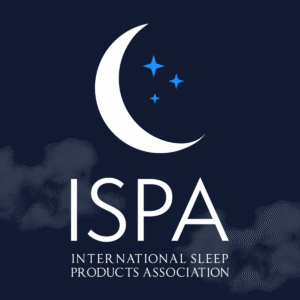CIO: Extinction Sleep Coaching | What It Is & If Its Secure

What’s the cry it out methodology (extinction sleep coaching)
The Cry-It-Out (CIO) methodology is a sleep coaching method the place mother and father enable their child to cry for a set interval with out rapid intervention, with the aim of serving to them be taught to self-soothe and go to sleep independently.
There are two foremost variations of CIO:
- Extinction Methodology – Mother and father put the infant down awake and don’t return into the room, permitting the infant to cry till they go to sleep.
- Ferber Methodology (Graduated Extinction) – Mother and father examine in at growing time intervals to supply transient reassurance however don’t decide the infant up.
What I Don’t Advocate: Full Extinction (the place you shut the door and go away the infant to cry with no check-ins). I imagine that is unnecessarily harsh and never in keeping with what we learn about toddler improvement and attachment. Infants thrive after they really feel safe, and a gradual, responsive method helps them construct unbiased sleep abilities with out pointless misery.
As a substitute, I advocate for gentler approaches like my Sleep Girl Shuffle, the place mother and father keep current, present reassurance, and progressively transfer away over time. This methodology is efficient whereas nonetheless supporting emotional safety.
Is the cry it out methodology protected
Some analysis helps its security and effectiveness, whereas others increase considerations about its affect on emotional well-being. As a sleep coach, I purpose to current the analysis, deal with considerations, and assist mother and father make knowledgeable selections.

What the Analysis Says About CIO
Research Supporting CIO as Secure
Analysis means that when used appropriately, CIO doesn’t trigger long-term hurt and may enhance sleep for each infants and oldsters.
Attachment and Behavioral Growth
- A 2020 research within the Journal of Baby Psychology and Psychiatry discovered that occasional CIO use didn’t hurt attachment or behavioral improvement at 18 months (Bilgin et al., 2020). Infants who underwent sleep coaching confirmed no variations in attachment safety in comparison with those that didn’t.
- One other research discovered that folks utilizing CIO reported fewer sleep difficulties and fewer crying over time (Giesbrecht et al., 2020).
Crying Period and Stress Discount
- A 1988 research discovered that infants left to “cry it out” cried much less general inside a number of nights, indicating they had been studying to self-soothe (Rickert & Johnson, 1988).
- Researchers differentiate short-term stress (crying) from power stress, suggesting infants alter to new sleep patterns with out long-term hurt (Mindell et al., 2006).
Parental Psychological Well being Advantages
- A 2008 research discovered that infants who slept higher after sleep coaching improved parental psychological well being, lowering stress, nervousness, and postpartum despair (Moore, Meltzer, & Mindell, 2008).
Conclusion from These Research
When utilized appropriately and constantly, CIO doesn’t hurt infants and may enhance sleep for your entire household.
Considerations and Criticism of CIO
Not all consultants agree that CIO is fully protected or appropriate for each child. Some argue that analysis could underestimate potential long-term results.
Potential Dangers to Attachment and Emotional Growth
- A 2021 commentary within the Journal of Baby Psychology and Psychiatry raised considerations that CIO analysis could not totally seize its affect on attachment and stress regulation (Davis et al., 2021).
- A 1972 research advised that extended, unsoothed crying might improve stress ranges, significantly in infants fighting emotional regulation (Bell & Ainsworth, 1972).
Does Crying Point out Studying?
- Some consultants argue that CIO doesn’t educate self-soothing however as a substitute situations infants to anticipate no response from caregivers (Rosier et al., 2020).
- Extended misery could trigger a cortisol (stress hormone) spike, although analysis is inconclusive about its long-term results (Douglas & Hill, 2013).
Parental Consolation and Emotional Toll
- Many mother and father discover CIO emotionally tough and wrestle with the misery it causes them and their child (Cleveland Clinic, 2021).
- Some sleep consultants counsel gentler strategies could also be equally efficient with out prolonged crying (Holliday-Bell, 2023).
Conclusion from These Research
CIO will not be the correct alternative for each child, particularly those that are extremely delicate or have issue regulating feelings. It can be difficult for folks who discover prolonged crying distressing.
Kim’s Perspective on CIO Security
Based mostly on analysis and expertise, right here is my skilled stance on CIO:
- CIO isn’t inherently dangerous—when carried out appropriately, research don’t present long-term detrimental results.
- Full “extinction CIO” (closing the door and leaving the infant to cry all evening) is pointless—gentler, extra responsive strategies may be simply as efficient.
- Consistency is vital—inconsistent CIO can improve misery and confusion for the infant.
- Each child is totally different—some adapt shortly, whereas others could wrestle with extended crying.
Mother and father don’t want to decide on between “no crying” and “letting a child cry for hours.” Center-ground approaches, just like the Sleep Girl Shuffle, encourage unbiased sleep with out excessive misery.
Making the Proper Alternative for Your Household
In the event you’re contemplating CIO, ask your self:
- Can I keep constant for a minimum of every week?
- Does my child alter properly to gradual modifications, or do they wrestle with massive transitions?
- Am I comfy with some crying, or would a gentler methodology work higher?
For many who discover sleep coaching isn’t working and full CIO too intense however nonetheless need to encourage unbiased sleep, a gentler, gradual method could also be a greater match. Belief your instincts—each child and household is totally different.

At What Age Can You Let a Child Cry It Out?
Most infants are not developmentally prepared for sleep coaching till round six months. At this level, many are able to self-soothing and may start to consolidate sleep.
⚠️ What About 4-5 Months? Some infants could also be prepared for mild sleep shaping at this age, however full CIO strategies are sometimes too abrupt. In the event you’re contemplating sleep coaching earlier than six months, I like to recommend a modified, gradual method, corresponding to shorter check-in intervals or staying within the room whereas lowering involvement over time.
Ought to a 3-Month-Previous Cry It Out?
? No, completely not. Three-month-olds are nonetheless growing their circadian rhythms and wish responsive care. Crying at this age is communication, and a child this younger nonetheless requires nighttime feeds and luxury to really feel safe.
Do you have to let a new child cry it out?
No, by no means. Newborns (0-4 months) want hands-on soothing, frequent feeds, and fixed reassurance to construct a safe attachment. Sleep coaching within the early weeks ought to concentrate on establishing wholesome sleep habits, not CIO.
As a substitute, I like to recommend:
- Making a constant bedtime routine
- Watchingwake home windows to keep away from overtiredness
- Encouraging unbiased sleep progressively (placing child down drowsy however awake when potential)
How Lengthy Ought to You Let a Child Cry It Out?
The period of crying is dependent upon the methodology used:
- Ferber Methodology (Graduated Extinction): Mother and father examine in at timed intervals (e.g., 5, 10, quarter-hour).
- Extinction Methodology (Full CIO): Child is left to cry with out intervention. This isn’t a way I like to recommend. Lengthy, unchecked crying could cause misery, and there are kinder methods to show unbiased sleep.
If crying extends past 90 minutes, I counsel reevaluating—this can be an indication that CIO isn’t the correct match to your baby
Naps and CIO:
Naps are totally different from nighttime sleep as a result of daytime sleep stress is decrease, making self-soothing more durable.
What I Advocate for Naps:
- Maintain crying intervals shorter than at evening.
- If crying exceeds half-hour, pause and alter the method. This might imply tweaking wake home windows, bedtime routines, or providing a gentler transition.
- If CIO isn’t working for naps after a number of days, strive a extra responsive methodology (corresponding to sitting subsequent to the crib or utilizing a shorter model of the Shuffle).
Security and Moral Considerations:
Is cry it out dangerous?
Extended, unchecked crying with out consolation may be irritating for each the infant and the mother and father, and it’s necessary to think about your baby’s temperament and age. A gradual, responsive methodology usually works properly to reduce stress.
Why is cry it out thought-about dangerous by some?
Considerations stem from the emotional misery attributable to prolonged crying. That is why many imagine sleep coaching is dangerous. Nonetheless, with strategies just like the Sleep Girl Shuffle, mother and father can keep current to supply reassurance whereas educating self-soothing.
Effectiveness and Success:
Does CIO work?
Sure, CIO may be efficient in educating infants unbiased sleep abilities. However it’s not the one method.
- CIO works greatest for folks who can stay 100% constant.
- If it doesn’t really feel proper to you, you don’t should do it! There are gentler alternate options which might be simply as efficient.
Managed crying vs. cry it out
Managed crying entails periodic check-ins (as in Ferber’s methodology), whereas CIO (extinction) entails no intervention in the course of the crying interval
Light cry-it-out strategies: Approaches just like the Sleep Girl Shuffle enable mother and father to remain shut, providing consolation and reassurance with out abandoning the infant, serving to each mum or dad and baby really feel supported.
CIO throughout sleep regressions
I do NOT suggest CIO throughout a sleep regression!
Sleep regressions (at 4, 8, and 12 months) are attributable to developmental modifications, and infants usually want further consolation. If sleep falls aside, concentrate on soothing and reestablishing routines first
CIO isn’t the one method to show your child to sleep. If it really works for your loved ones and feels proper, nice! But when it doesn’t, know that gentler strategies—like my Sleep Girl Shuffle—may be simply as efficient with out pointless tears.
Citations
Bilgin, A., Wolke, D. (2020). Parental use of ‘cry it out’ in infants: no adversarial results on attachment and behavioral improvement at 18 months. Journal of Baby Psychology and Psychiatry.https://pubmed.ncbi.nlm.nih.gov/32155677/
Davis, A. M. B. (2021). Commentary: Does ‘cry it out’ actually don’t have any adversarial results on attachment? Journal of Baby Psychology and Psychiatry. https://pubmed.ncbi.nlm.nih.gov/33608871/
Giesbrecht, G., et al. (2020). Parental Use of “Cry Out” in a Group Pattern In the course of the First 12 months of Toddler Life. Journal of Developmental & Behavioral Pediatrics. https://journals.lww.com/jrnldbp/summary/2020/07000/parental_use_of__cry_out__in_a_community_sample.8.aspx
Rickert, V., & Johnson, C. (1988). Lowering nocturnal awakening and crying episodes in infants and younger youngsters: A comparability between scheduled awakenings and systematic ignoring. Pediatrics.https://pubmed.ncbi.nlm.nih.gov/3340471/
Mindell, J., Kuhn, B., Lewin, D., Meltzer, L., & Sadeh, A. (2006). Behavioral therapy of bedtime issues and evening wakings in infants and younger youngsters. Sleep. https://pubmed.ncbi.nlm.nih.gov/17068979/
Moore, M., Meltzer, L., Mindell, J. (2008). Bedtime Issues and Night time Wakings in Kids. Major Care: Clinics in Workplace Observe.https://pubmed.ncbi.nlm.nih.gov/18710671/
Douglas, P., & Hill, P. (2013). Behavioral Sleep Interventions within the First Six Months of Life Don’t Enhance Outcomes for Moms or Infants: A Systematic Assessment. Journal of Developmental & Behavioral Pediatrics. https://psycnet.apa.org/file/1973-11043-001
Bell, S. M., & Ainsworth, M. D. S. (1972). Toddler Crying and Maternal Responsiveness. Baby Growth.
Rosier, J. G., et al. (2020). How the Cry-It-Out Methodology Grew to become Authoritative Information. Journal of Household Points.https://journals.sagepub.com/doi/10.1177/0192513X20949891




